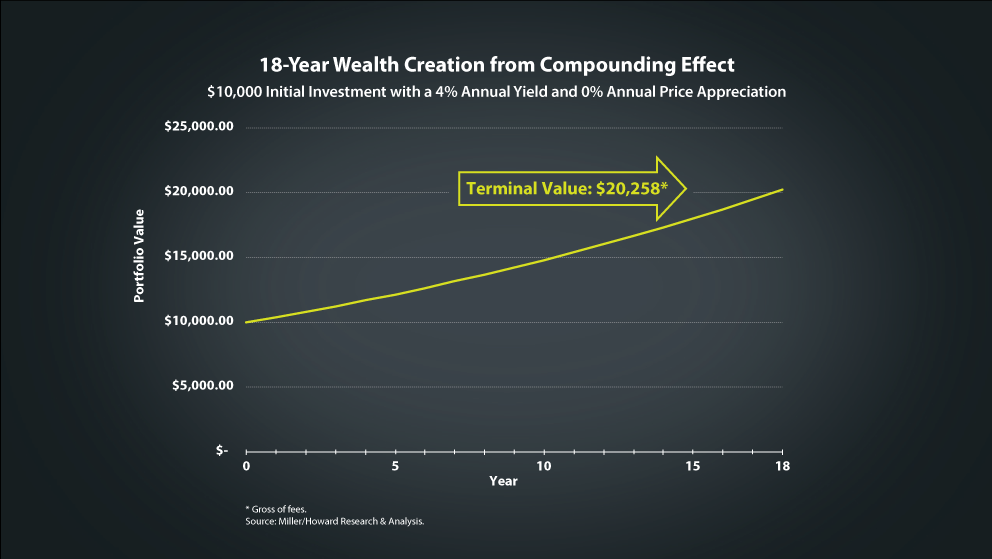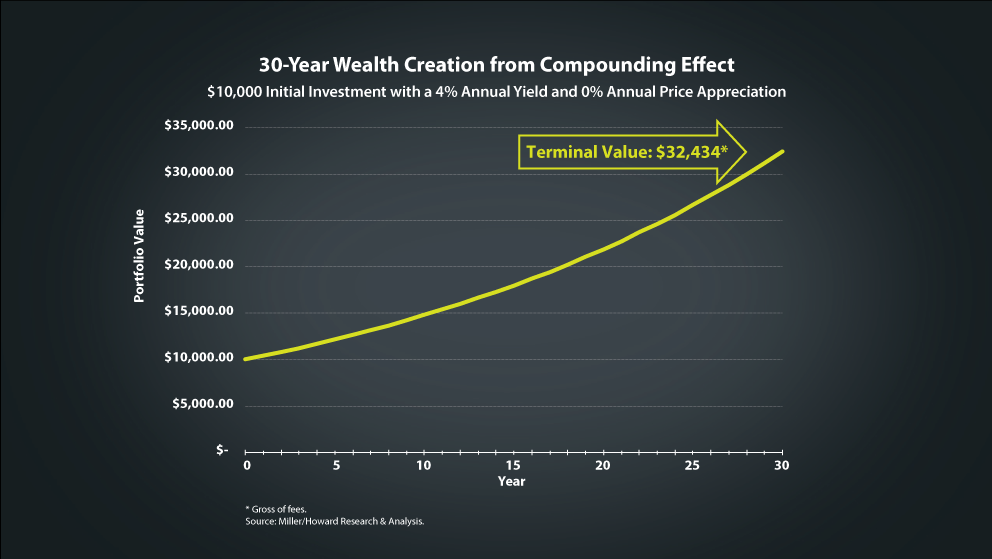Hi, I’m Jack Leslie, portfolio manager at Miller/Howard Investments. In this video, I’m going to talk about the benefits of dividends for savers. While many asset allocation theorists advise young investors to take on more risk because they have time to recover from a poor investment, I’d like to suggest that they would also benefit from doing just the opposite with a portion of their portfolio. Since they have a long time before they need their nest egg, they should put that time and the mathematical principle of compounding to work for them in their investment portfolio.
Using “boring” high-dividend-yielding stocks that can continue to pay their dividends, an investor can reinvest the cash flow from those stocks into more shares of high-dividend-yielding stocks, which will then generate even more cash flow, which can then be reinvested into still more shares, and so on, and so on. The more time an investor has, the more opportunities they have to repeat that reinvestment cycle, the more shares will be in their portfolio, and the more cash flow those shares will be able to generate.
Just from reinvesting those continuing dividends, and assuming no change in the share price, an investor can enjoy dramatic wealth creation from time and compounding.

Are you saving for a child’s college education? Looking at this chart, you can see that even without any increase in the price of the underlying stocks , and keeping fees and taxes out of the equation, a 4% dividend yield alone, reinvested over 18 years, can grow a $10,000 portfolio to over $20,000.* Again, this is without stock price gains. This is just from picking a portfolio of stocks that can reliably continue to pay their dividends over time.
Are you saving for retirement? With more time comes more wealth creation, and an even faster rate. This chart shows the results of the same scenario but kept for 30 years.

Here you can see that a 4% dividend yield, reinvested over 30 years, can grow a $10,000 portfolio to over $32,000.* Again, this is just from picking high-dividend-yielding stocks that can continue to pay their dividends over time.
To me, this is even more appealing when you realize that this “compounding machine” that the investor has created for themselves doesn’t depend on the market going up, or the economy doing better, or Washington’s fiscal policy or tax policy, or the Fed’s latest move. It doesn’t depend on anything but the ability of the portfolio of stocks to continue to generate the same dividend every year for 30 years along with the mathematical principle of compounding. If the company can grow their dividend, then that would only speed up the pace of wealth creation and the line on the chart would increase that much faster.
It is true that younger investors have a longer time horizon and can recover from a riskier investment that turns sour. But rather than just using time as a bandage to try to recover from a soured investment, perhaps it’s smarter to take a portion of that portfolio and invest in “boring” high-dividend-yield stocks and use the mathematical principle of compounding and time to build your wealth.
*Gross of fees

